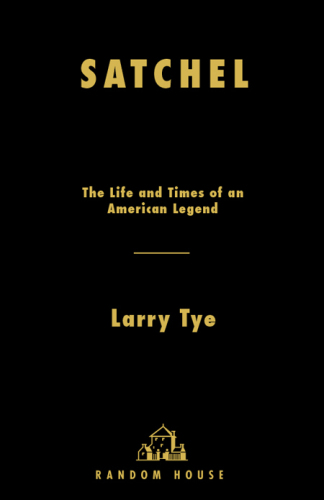
Satchel
The Life and Times of an American Legend
کتاب های مرتبط
- اطلاعات
- نقد و بررسی
- دیدگاه کاربران
نقد و بررسی

April 20, 2009
Tye, a Boston Globe
reporter and author of The Father of Spin
, offers the first biography on Satchel Paige, the premier pitcher of the Negro Leagues. Having interviewed more than 200 veteran fellow players of the Negro and Major Leagues, he is able to flesh out the Satchel Paige persona. Through Paige’s hardscrabble years in Jim Crow Alabama to his time with the all-black Monarchs, one of the powerhouses in segregated “colored” ball, Tye dissects Satchel’s mastery of pitching, his accuracy, power and velocity, and signature pitch, the sizzler. Satchel was among the peerless Negro Leaguers, who beat the white big leaguers more than 60% of the time; he struck out some of the biggest sluggers, like Ralph Kiner, Rogers Hornsby and even Joe DiMaggio, who got one hit off of Satchel and was signed by the Yankees immediately. He became one of four black athletes signed up in the late 1940s, with the Cleveland Indians, three years after Jackie Robinson joined the Dodgers (the two men were bitter rivals). This is the definitive biography of a black showman-athlete, and as Tye makes the case, one of the finest pitchers ever, who finally was inducted into the Baseball Hall of Fame in 1971.

May 15, 2009
A fine biography of the legendary baseball Methuselah.
In 1945 Brooklyn Dodger's general manager Branch Rickey signed Jackie Robinson, breaking a color barrier that had held for more than 75 years. Though revolutionary, Rickey's selection overlooked a generation of Negro Leagues superstars, none bigger than Satchel Paige (1906–82), quite possibly the greatest pitcher ever. After a lengthy Negro Leagues career, tours barnstorming against the likes of Dizzy Dean and Bob Feller and seasons played in Cuba, Venezuela and the Dominican Republic, by 1944 Paige had become the biggest attraction and the highest paid player in the game. Starting out as a blazing fastballer, he later developed an array of pitches that baffled hitters and delighted fans. He matched his on-field showmanship with a larger-than-life persona as a comic and aphorist. Along the way, he also developed a reputation as a contract jumper, crazy driver, mad fisherman, womanizer and all-around fast liver who bridled at Jim Crow's rules. Although Paige had proven that white fans would come to see a black ballplayer, his age and reputation disqualified him as the impeccable figure Rickey needed for the tricky role of"first." Journalist and biographer Tye (Rising from the Rails: Pullman Porters and the Making of the Black Middle Class, 2004, etc.) conducted more than 200 interviews with Paige's former teammates to reconstruct this amazing career, in which the facts, including such basics as Paige's birth date, the spelling of his last name and the origins of his sobriquet, require careful sifting from the mistakes, misinformation and myth. Tye never quite convinces us that Paige consciously constructed"a brilliantly defiant parody" in order to combat racism, but he's correct that Paige knew his value and put himself first in a way that anticipated the superstars of today's game. Well past his prime, Paige finally got a shot at the Majors with three teams—including an appearance for the Kansas City Athletics at age 59—and a plaque in Cooperstown in 1971.
An authoritative treatment of a true baseball immortal.
(COPYRIGHT (2009) KIRKUS REVIEWS/NIELSEN BUSINESS MEDIA, INC. ALL RIGHTS RESERVED.)

May 15, 2009
Leroy "Satchel" Paige is a poster child for the tragedy of segregated baseball. He could have dominated major league pitching but got a chance with the Indians only at the end of his career. Paige could have been the star to break baseball's color line, but Jackie Robinson got first crack as a "safer choice." While there are stacks of biographies about Robinson, this is the first attempt at a full, major biography of Paige. Tye, a journalist, is more noted for his labor histories, such as "Rising from the Rails", about black rail porters. However, he's a passionate baseball fan with a strong interest in the history of segregated America. Why has so little been written about Paige? One factor is the difficulty of getting reliable information. Paige was well known for embellishing stories. Tye masterfully weaves primary and oral sources together to create a credible biography of a talkative yet elusive subject. We can hope that his occasional sloppiness when it comes to sports facts (e.g., he refers to Joltin' Joe Dimaggio as "Jumpin'" Joe) will have been corrected for publication because this is an important book about a neglected figure in baseball history. Recommended for all readers in sports as well as 20th-century America.Randall Schroeder, Ferris State Univ., Big Rapids, MI
Copyright 2009 Library Journal, LLC Used with permission.

























دیدگاه کاربران